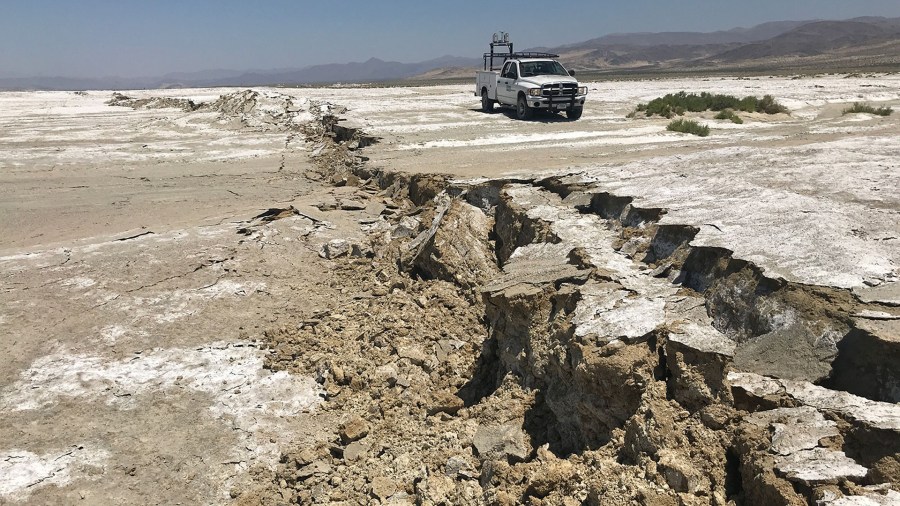A new study suggests that last year’s Ridgecrest earthquakes increased the chance of a large earthquake on California’s San Andreas fault.

And the chance of a large quake on the San Andreas has roughly tripled in the next year, according to the study’s coauthor. (Credit: Ben Brooks / U.S. Geological Survey)
The study, published in the Bulletin of the Seismological Society of America on Monday, says there is now a 2.3% chance of an earthquake of magnitude 7.5 or greater in the next 12 months on a section of the 160-mile-long Garlock fault, which runs along the northern edge of the Mojave Desert.
That increased likelihood, in turn, would cause there to be a 1.15% chance of a large earthquake on the San Andreas fault in the next year.
Those odds may seem small. But they’re a substantial jump from what the chances were before last year’s Ridgecrest, Calif., earthquakes, whose epicenters were about 125 miles northeast of downtown L.A.
Read the full story on LATimes.com.





















